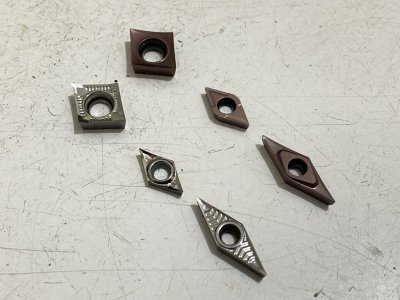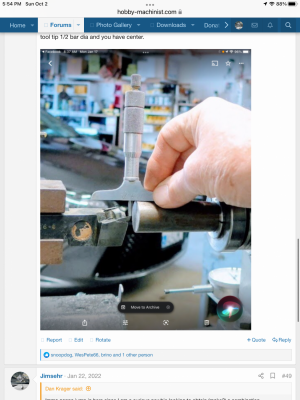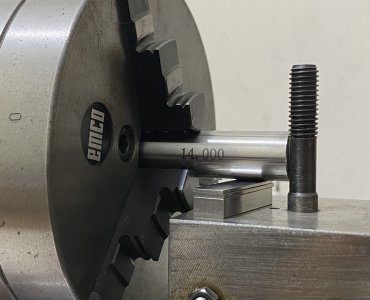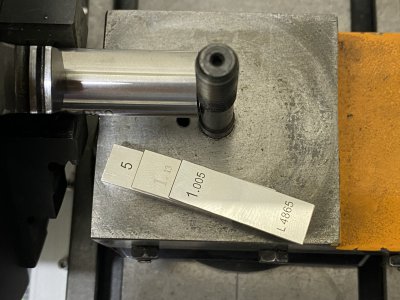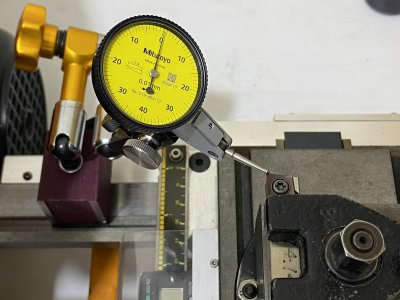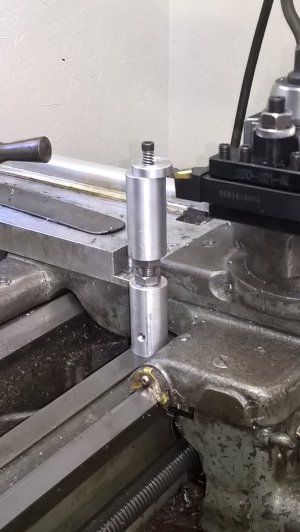I have carbide inserts of three geometries : CCGT , DCGT and VBGT. For each geometry, I have got a type intended for cutting aluminum ( no coating ) and the other for cutting steel ( coated ). I found that the tips of the inserts for cutting aluminum are always lower by 0.1 mm or 4 thou compared with those for cutting steel. That makes me wonder if such difference is by design. Now I am not sure what to do. Should I use seperate tool bars for each type of insert ? My practice is to machine the shim for the tool bar to the right thickness and glue the shim onto the tool bar so that I don't have to shim it everytime.
Attachments
Last edited:


